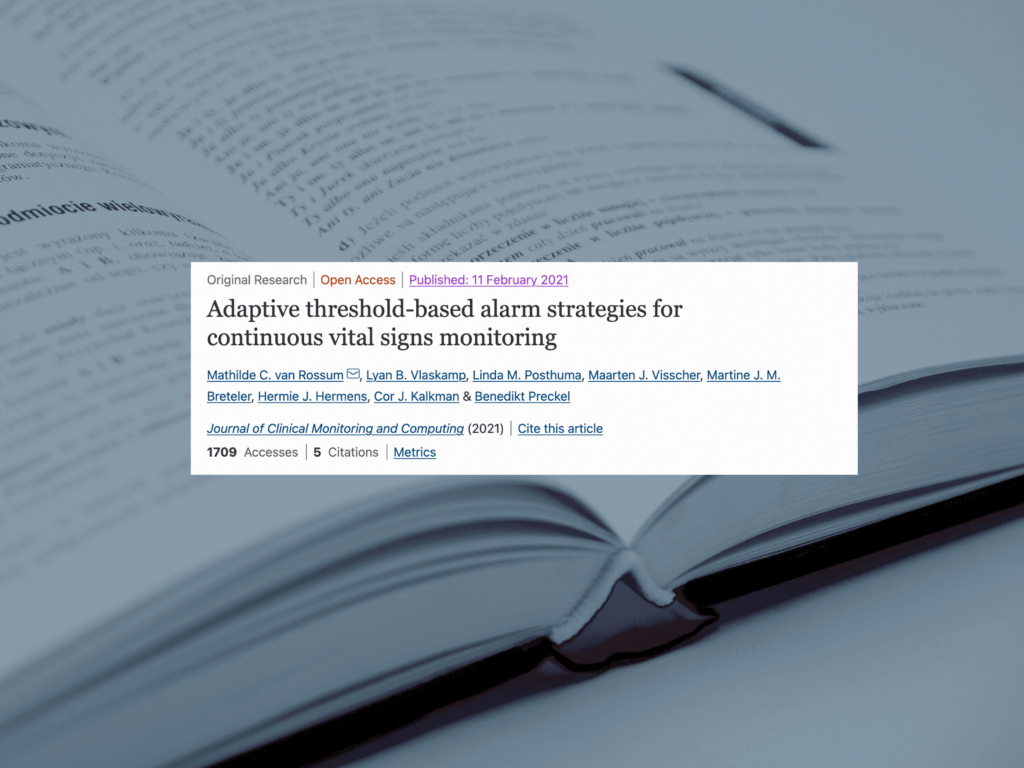
Publication list and references
Download the most recent list of summaries and extracts on the Senium© system to have all our evidence in one place. References from our website can be found below.
Bekijk artikel
A study using Sensium, aimed to explore methods to prevent alarm fatigue and concluded that combining multiple alarm strategies could improve alarm performance and earlier identification of deterioration.
Rossum, M.C., Vlaskamp, L.B., Posthuma, L.M. et al. J Clin Monit Comput (2021).
Continuous vital signs monitoring in post-surgical ward patients may support early detection of clinical deterioration, but novel alarm approaches are required to ensure timely notification of abnormalities and prevent alarm-fatigue.
This study evaluated the performance of classical and adaptive threshold-based alarm strategies for continuous vital signs monitoring in ward patients. The aim was to explore easy-to-implement and transparent methods to support identification of clinical deterioration related to postoperative AE’s
The current study explored the performance of classical and various adaptive threshold-based alarm strategies to warn for vital sign abnormalities observed during development of an adverse event (AE). A classical threshold-based alarm strategy used for continuous vital signs monitoring in surgical ward patients was evaluated retrospectively. In the study, (combinations of) six methods to adapt alarm thresholds to personal or situational factors were simulated in the same dataset. Alarm performance was assessed using the overall alarm rate and sensitivity to detect adverse events. Using wireless patch-based monitoring system, Sensium, 3999 h of vital signs data was
The results showed that the currently used classical threshold-based alarm strategy detected abnormalities in vital signs before or after onset of treatment in most of the observed AEs in ward patients.
The clinically used classical alarm system produced 0.49 alarms per patient/day with most alarms (63%) presented during daytime (8 a.m–10 p.m).
This study evaluated the performance of classical and adaptive threshold-based alarm strategies for continuous vital signs monitoring in ward patients. Each of the tested adaptive strategies either increased sensitivity to detect adverse events or reduced overall alarm rate. Combining specific alternative alarm strategies improved overall performance most, where sensitivity rates increased while raising only few extra alarms. In particular, the number of AEs where alarms were observed in the 24h prior to onset of treatment was increased, which suggests that implementation of multiple approaches to adaptive alarm thresholds may improve early detection of clinical deterioration in ward patients. Strategies that adapt vital sign alarm thresholds to personal or situational factors may improve early detection of adverse events or reduce
In conclusion, a classical threshold-based alarm strategy is able to identify abnormalities in continuously measured vital signs for the majority of AEs observed in surgical ward patients without causing excessive alarm rates.
Combining multiple adaptive threshold-based strategies may improving alarm performance and may contribute to increased or earlier identification of clinical deterioration.
